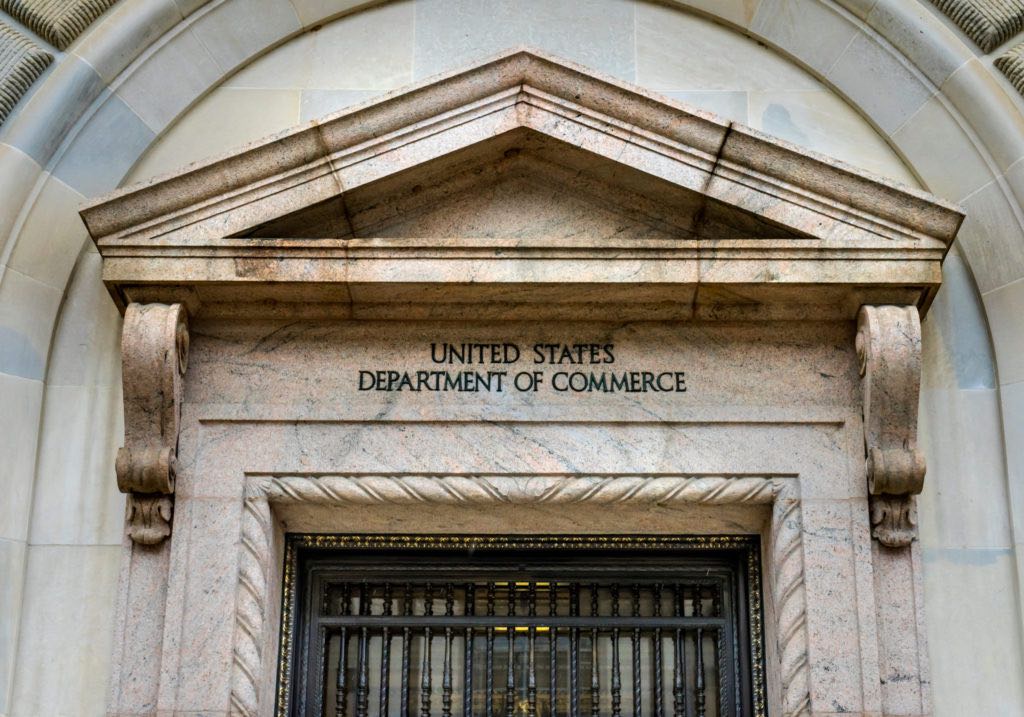
Op-Ed by Deputy Secretary Don Graves: America’s Hidden Tool is Hobbling Russia’s War Machine with Multilateral Impact
Feb 1, 2023
Op-Ed by Deputy Secretary Don Graves: America’s Hidden Tool is Hobbling Russia’s War Machine with Multilateral Impact
KCPullen@doc.gov
Wed, 02/01/2023 – 10:47
Trade enforcement
FOR IMMEDIATE RELEASE
Publication
War On The Rocks
Wednesday, February 1, 2023
Office of Public Affairs
publicaffairs@doc.gov
Don Graves
Today, the U.S. Department of Commerce is continuing to take action against Russia and those who enable Russia’s war in Ukraine. We added trade restrictions to seven Iranian entities involved in Iran’s drone program for supporting Russia’s war efforts and trying to use U.S. items to do it. They join a list of more than 370 entities that the department has taken action against since Feb. 24, 2022. Almost a year after Russia’s full-scale invasion of Ukraine, now is the time to look back and ask: What impact has the United States had?
In response to the invasion, American support for Ukraine was immediate and unwavering, committing billions of dollars in security assistance to counter Russian aggression. Along with allies and partners, we also imposed severe economic costs on Russia to hobble its war machine.
Central to this effort have been the unprecedented “export controls” we put in place at the U.S. Department of Commerce. One of their greatest areas of impact on the Russian defense industry is its resulting tech shortage. Export controls have hampered Russia’s ability to sustain, repair, and resupply its weaponry.
Export controls are one of the most powerful national security tools that you’ve probably never heard of. They are trade restrictions that help keep us safe by preventing adversaries from acquiring American products and using American innovation against the United States, our allies, and our values. Export controls are a policy tool that the U.S. government has developed over decades. But in 2022, export controls took on new strategic importance. The U.S. government deployed more export controls with greater speed, precision, and multilateral coordination than ever before. These controls are playing an essential role in ensuring the national security of the United States and our partners around the globe.
Unprecedented Measures
The story of these export controls starts at the Commerce Department, where I’ve been leading this effort. The Commerce Department develops, implements, and enforces export controls on “dual-use” products (items with both a commercial and military use) as well as certain items with only military uses. Export controls allow the U.S. government to protect access to U.S.-made goods and technologies as well as certain foreign-made items that incorporate U.S. content or are produced from U.S. software, technology, or equipment.
They work like this: Once an export control rule is announced, exporters must assess whether their products or transactions are subject to the new restrictions and whether authorizations are required from the U.S. government. That assessment might include reviewing their products’ technical specifications and customer lists. There are more details to the process, such as reviewing compliance procedures for the new controls, but that is the basic idea.
On Feb. 24, 2022, when Russian tanks headed towards Ukraine’s capital, we in the Biden administration knew we needed to support the brave people of Ukraine, impose significant economic costs on Russia, and limit the Kremlin’s ability to be successful on the battlefield in Ukraine. Export controls were a critical part of that effort.
Through export controls, we built significantly on our already-existing controls on Russia with a combination of Russia-wide and entity-specific restrictions. We began restricting predominantly commercial items that could be used to sustain Russia’s weapons systems. This included low-level semiconductors, lasers, sensors, and maritime and aerospace parts such as fasteners and bearings to help degrade Russia’s military and defense industrial base. We applied these measures to Belarus as well due to its complicity in Russia’s aggression.
We also used our Entity List. The seven Iranian entities noted above were added to this list of restricted parties. These Iranian entities are now subject to additional trade restrictions, including through the use of our Foreign Direct Product Rule, which imposes controls on foreign-made items produced with the use of certain U.S. equipment. This means it’s not just U.S.-made products they are constrained from acquiring. The Foreign Direct Product Rule impacts their ability to obtain many foreign-made electronic components too that could be used in Iranian drones.
More importantly, the U.S. government worked with international allies and partners to coordinate export controls with those of 37 other like-minded nations to amplify their impact. In the history of export controls, the pace and depth of multilateral alignment against Russia has never happened before. The United States and our allies and partners worked together for months to release regulations essentially in lockstep.
The Commerce Department undertook a massive outreach effort to help the public understand, and thus comply with, the new rules. Where necessary, the Commerce Department has followed up with enforcement action to address potential violations of the controls. We have our own enforcement arm that works closely with other branches of the U.S. government, including the Department of Homeland Security, the Federal Bureau of Investigation, the State Department, the Treasury Department, U.S. embassies abroad, the Defense Department, and the intelligence community. In addition, we collaborate and coordinate with international partners.
The Impact of Export Controls
Because of export controls, Russia’s semiconductor or chip imports, the lifeblood of Russia’s weaponry, have dropped by nearly 70 percent compared to the same time period in 2021. Russia does not produce its own advanced semiconductors, so it is heavily reliant on outside sources.
As a result, Russia has struggled to sustain, restore, and replace many of its weapon systems, including over 6,000 pieces of military equipment, such as tanks, armored personnel carriers, and infantry fighting vehicles that were destroyed over the last year. In a way, this impact is harder to observe, because nobody hears the dogs that do not bark. Weapons that are unable to be repaired or replaced cannot be used. But just imagine if there were no U.S. export controls.
These efforts have made it difficult for the Russian military, as evidenced by the lengths to which it has gone to find microchips. Starved for microchips, the Russian military has been cannibalizing semiconductors from dishwashers, refrigerators, and even electric breast pumps in order to fix its military hardware. Internationally, Russia has turned to pariah states like North Korea and Iran to obtain artillery shells, rockets, and drones made with black market components. But these are not good substitutes for U.S.- and U.S. partner-made parts.
Russia’s changed behavior is evidence that our controls are constraining Russia’s ability to replace its military hardware.
Recent reports have highlighted U.S.- and U.S. partner-made components in Russian weaponry discovered in Ukraine. Of course, Russia had a stockpile of weapons before our export controls went into effect. Analysts have acknowledged that the majority of U.S.- or U.S. partner-made components discovered in Russian weaponry in 2022 date to before 2014. They have also acknowledged that some components may be counterfeit and not U.S.- or U.S. partner-made in the first place.
What is missed in these discussions is the larger point of Russia’s lack of access. As one news outlet has rightly remarked, “it is hard for an entire economy to be run on smuggled goods, especially when some of them are scarce everywhere.” The same can obviously be said about a military. Two of Russia’s largest domestic microelectronics manufacturers temporarily halted production due to a lack of critical foreign technologies, which Russia is dependent on for advanced microelectronics. During a meeting of Russian technology entrepreneurs last year, a participant from a Russian federal research institute listed on the Entity List spoke up. She told Russian President Vladimir Putin – who was in attendance – that her institute’s equipment is used for measurements on Novaya Zemlya, which, according to news reports, was the site of Russia’s hypersonic missile tests. She continued: “As a developer, I am very worried about our microelectronics.” According to the Kremlin transcript of the meeting, Putin replied, “Me too, honestly.”
Continued Action for a Safer World
Russia’s supply chain predicament is a direct result of sweeping American export controls. The Commerce Department will continue to act when needed, including enforcing the restrictions already in place. Last November, the U.S. government unsealed charges against seven individuals for their alleged involvement in a global smuggling ring to supply the Russian government with sensitive technology. In December, we announced a new rule targeting a Russian company fueling the war in Ukraine.
Export controls link the strengths of U.S. technological innovation with the imperatives of national security. They allow us to defend and protect ourselves, our allies, and our democratic values when our adversaries seek to use American products and technology to undermine our national security.
In their joint press conference in December, U.S. President Joe Biden stood in solidarity with Ukrainian President Volodymyr Zelenskyy as they articulated the global imperative to defend democracy and sovereignty. “We all know what’s at stake,” President Biden said. Through export controls, we at the Commerce Department have an effective tool for realizing a safer, more democratic world.
Don Graves is the 19th Deputy Secretary of the U.S. Department of Commerce.
Bureaus and Offices
Bureau of Industry and Security
Leadership
Don Graves
Tags
Export Controls
Read the full report from the U.S. Department of Commerce: Read More


